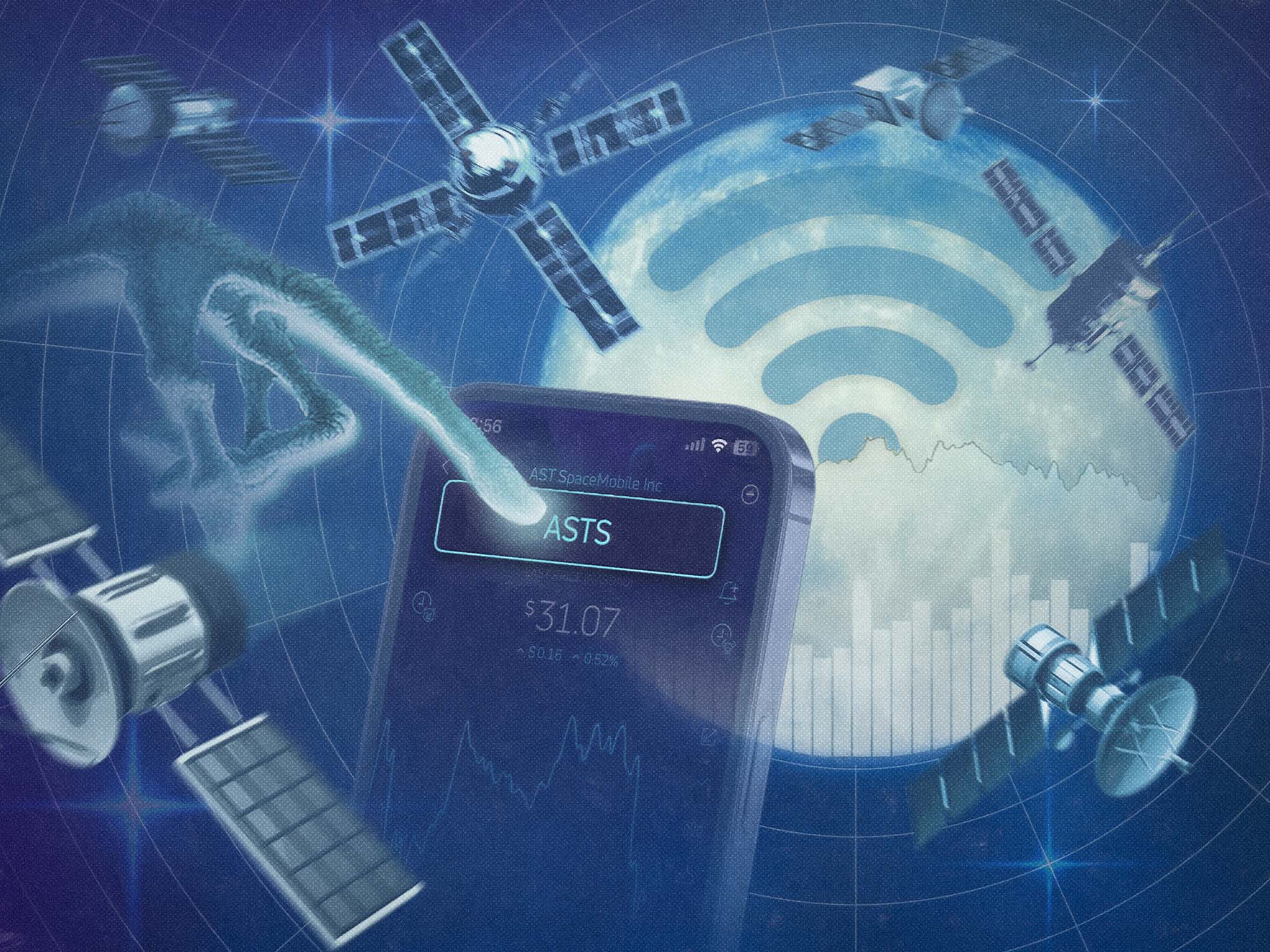Space stocks have been red hot. Just look at Rocket Lab (NASDAQ: RKLB), whose shares have outperformed AI darlings like Nvidia (NASDAQ: NVDA) and surged nearly 470% over the past year amid growing demand for its orbital launch services. There’s an even brighter star in the skies, though, with AST SpaceMobile (NASDAQ: ASTS) returning 830% over the same period.
Those extraterrestrial gains have occurred as AST SpaceMobile builds out what it says will be the first space-based cellular broadband network that will eventually provide uninterrupted coverage across the entire globe. The service will likely work with your current phone, eliminating pesky dead zones and providing off-grid connectivity without the need for any new equipment. The company already has five satellites in orbit, and a deal with AT&T (NYSE: T) and Verizon (NYSE: VZ) to start tests in select US markets.
“The markets we are pursuing are massive, and the problem we are solving is important and touches nearly all of us,” president Scott Wisniewski told investors in a recent earnings call. The company is, at least initially, envisioning a business model that will allow customers of mainline cellular carriers to pay a small monthly—or even daily—fee to turn on the supplemental service when they need it.
It’s an important and cutting-edge service for sure, but there are several reasons one could be skeptical about the company’s current market capitalization of $9 billion. To start, it’s spending heavily for what will be—at least initially—a backstop. There are lots of people who pay for airplane Wi-Fi or international roaming packages when they travel, but there are also lots who don’t. Just how many will actually shell out $10 for a service they don’t need most of the time remains to be seen.
Then there’s all the capital expenditure to come. AST SpaceMobile says it will need 45 to 60 satellites in service before it can offer truly continuous coverage, and it’s got agreements with SpaceX and Blue Origin to launch them all during 2025 and 2026. But at a total cost of $19 to $21 million each, the company is going to need at least $760 million for that to happen. That’s approaching the $1 billion in cash the company has on its balance sheet, which means more funds might need to be raised eventually in moves that could dilute current shares.
Finally, there’s good old competition. Apple (NASDAQ: AAPL) already lets users send limited satellite messages for free from their newer iPhones, and T-Mobile (NASDAQ: TMUS) is beta-testing a tie-up with SpaceX’s Starlink service that will provide connectivity from the heavens above for as little as $10 a month. The emerging space is already looking a little crowded, and the niche could quickly be commoditized as quickly as a rocket launch countdown. AST SpaceMobile has plans to expand into other markets like Japan, and there are also lucrative government contracts, but all of that will only really get rolling once its constellation is completely in place.
There should be little doubt that the future of communication lies in the stars, but it will be a bumpy road to get there, at least financially. The real winners, besides consumers looking for connectivity from the wilderness, may be those launch companies like Rocket Lab actually sending the satellites up at record pace. They don’t have to worry about selling add-on packages to retail customers, many already stressed about ballooning monthly bills and never-ending subscription fatigue.




Comments